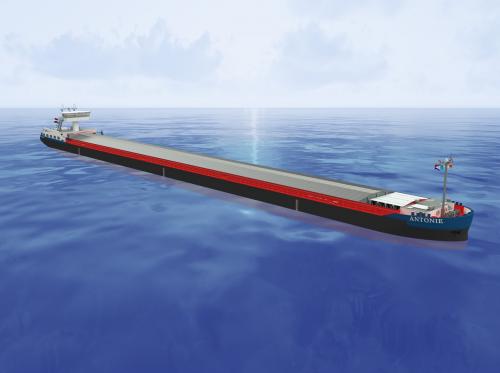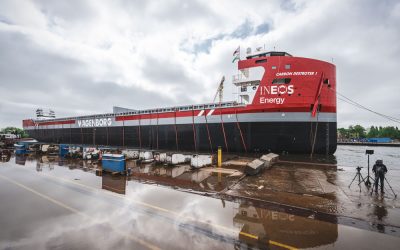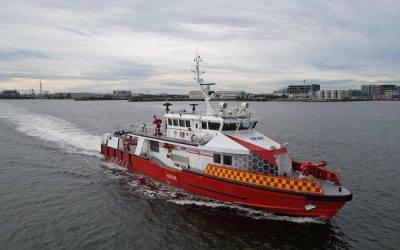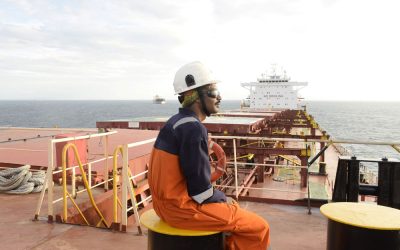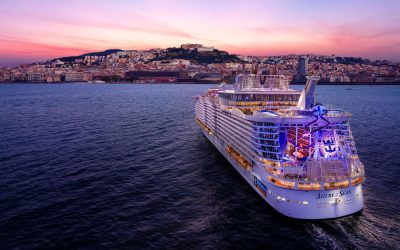In recognition of the important role that inland shipping can play in helping to reduce freight transport-related greenhouse gas emissions, the Dutch government is making significant investments to accelerate the sector’s decarbonisation and has committed itself to reduce CO2 emissions from the country’s still largely diesel-fuelled fleet by between 40% and 50% in 2030 compared to 2015.
With some ships already running on batteries, liquefied natural gas or with cleaner engines, next year will see an entirely new vessel enter service sailing on green hydrogen.
“There will not be one single way to reduce emissions in our sector, but hydrogen is an important sustainable alternative to fossil diesel fuel to power inland vessels,” Femke Brenninkmeijer, CEO of Rotterdam-based NPRC, the largest cooperative charterer in European inland shipping, tells The Naval Architect.
With a member base of 145 inland shipping entrepreneurs, at least 200 vessels are underway every day on behalf of NPRC, delivering 14 million tonnes of cargo per year.
“NPRC has a long history when it comes to making water transport more sustainable. Working together as a cooperative with a long-term vision is always the starting point,” Brenninkmeijer says.
A demonstration project – WEVA (an abbreviation for Hydrogen Electric Freight Vessel Antoine) – supervised by NPRC has recently been given the go-ahead by the Dutch Ministry of Infrastructure and Water Management to build the Netherlands’ first newbuild inland waterway vessel to run on green hydrogen. The ship is expected to embark on its maiden voyage in mid-2023, transporting salt from the Nobian salt factory in Delfzijl to the company’s Botlek chemical plant in Rotterdam.
WEVA is a partnership between NPRC, Nobian, vessel operator and NRPC member Lenten Scheepvaart, shipbuilder Concordia Damen, fuel cell producer Nedstak, and hydrogen sector consultancy HyEnergy TransStore.
According to Brenninkmeijer, construction of the Antonie will contribute to further development of hydrogen technology aboard ships and also help accelerate the drafting of legislation surrounding the use of hydrogen in inland shipping. The experiences gained during the development phase, construction and launch will contribute to determining the viability and costs of comparable projects in the future, she adds.
At over €10 million (£8.8 million), the costs for the construction and development of the 135m-long Antonie (the maximum length for inland shipping vessels) are about double that of a regular ship, says Lenten Scheepvaart owner Harm Lenten. With Lenten Scheepvaart contributing just over half, the additional costs are covered by a €4 million (£3.5 million) subsidy from the Ministry of Infrastructure and Water Management.
“It’s a big investment for us, but I believe this project will be the breakthrough towards the use of hydrogen in inland shipping,” explains Lenten.
Lenten says that although not everything has crystalised architecturally yet, locating living quarters in the foreship of the vessel will make way for the hydrogen. “New construction benefits over retrofitting because you can integrate the hydrogen installation and storage in the ship in the best way and you don’t have to give up cargo space,” he adds.
WEVA estimates that Antoine will transport approximately 3,700 tons of salt per voyage, the equivalent of 120 trucks, entirely free of emissions. The hydrogen used by the vessel will be produced by Nobian. It is created as a by-product in the production of chlorine and lye, based on salt water electrolysis. Because Nobian uses renewable energy for the electrolysis, the hydrogen is certified as green.
The shipper’s commitment to work with NPRC and Lenten Scheepvaart over the long term, both for ship transport and for the supply of green hydrogen, was decisive in NPRC and Dutch central government moving ahead with the WEVA project, according to Brenninkmeijer.
She notes that the availability of the gas is not a problem for this test, but in order to facilitate hydrogen sailing on a larger scale afterwards it will have to be available in many inland ports, which will require major investments.
